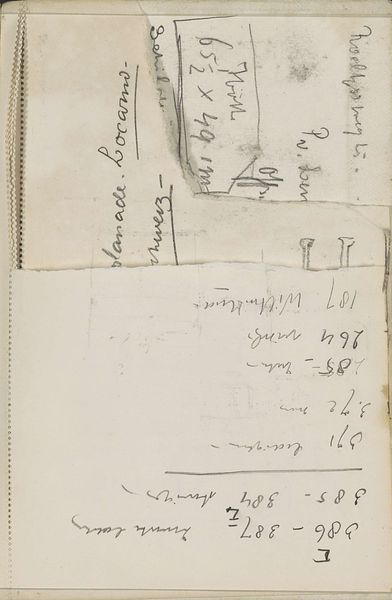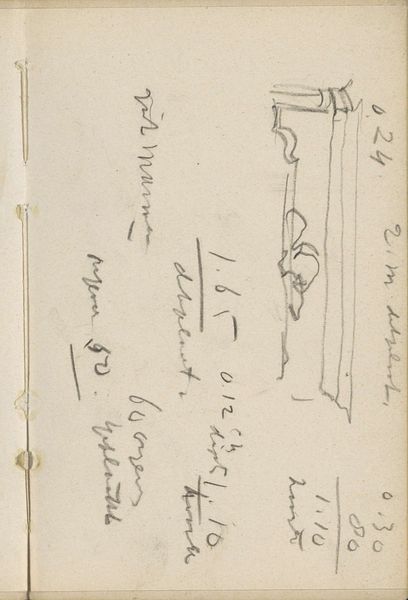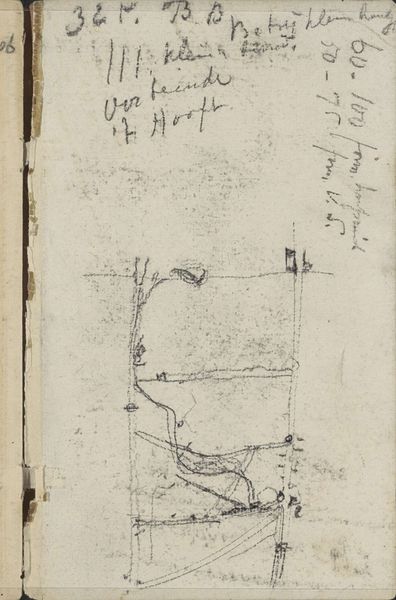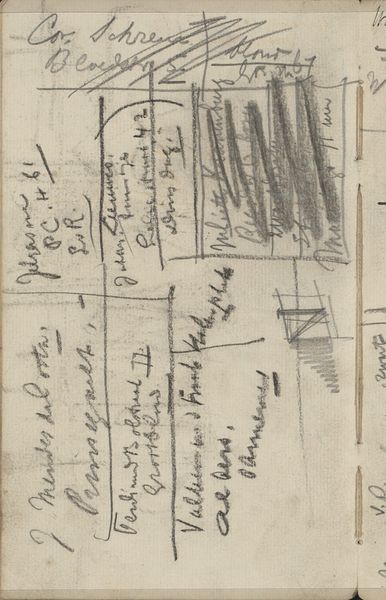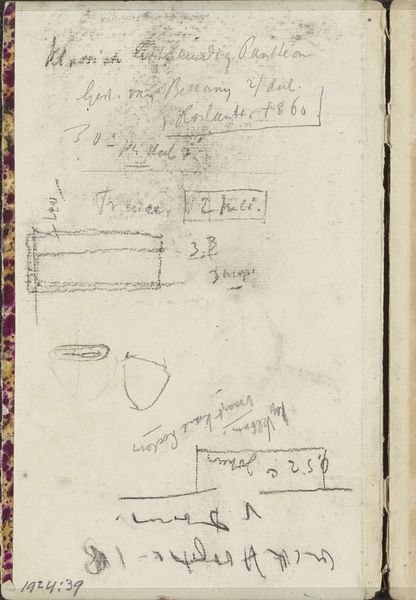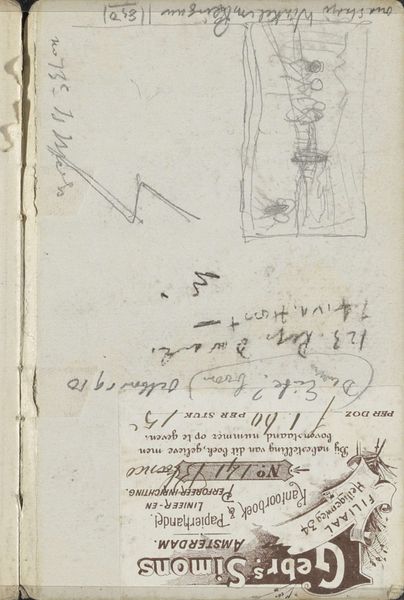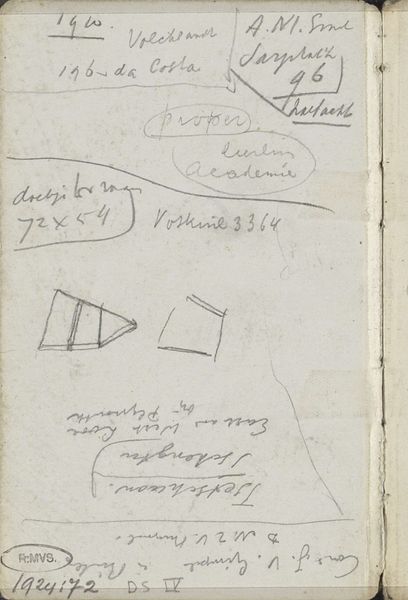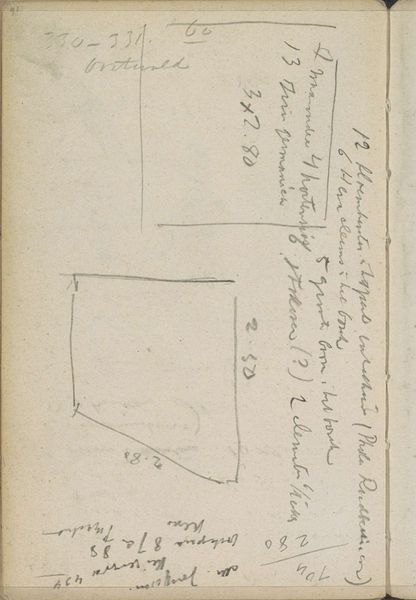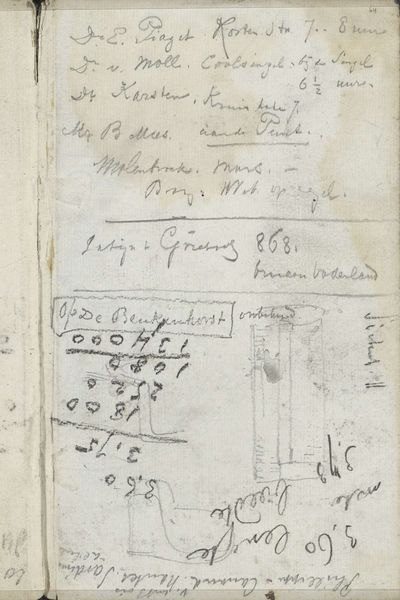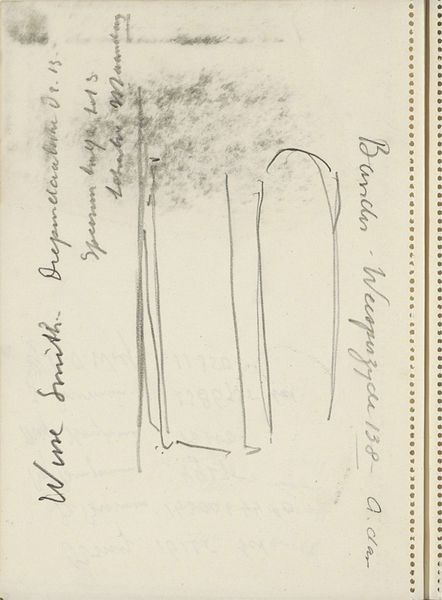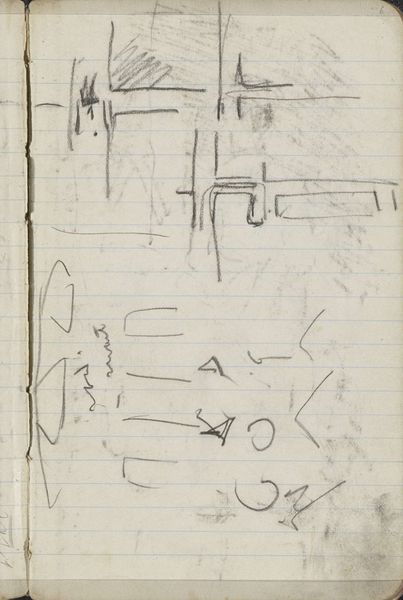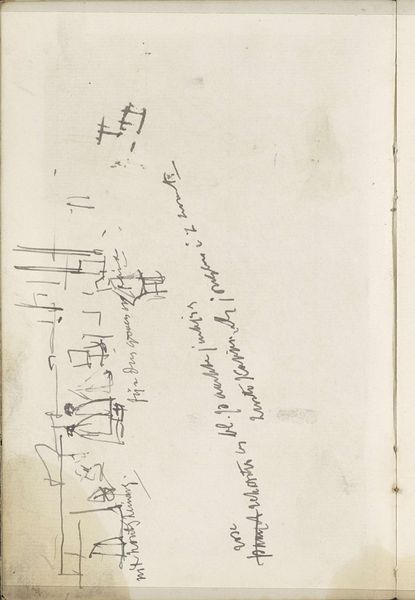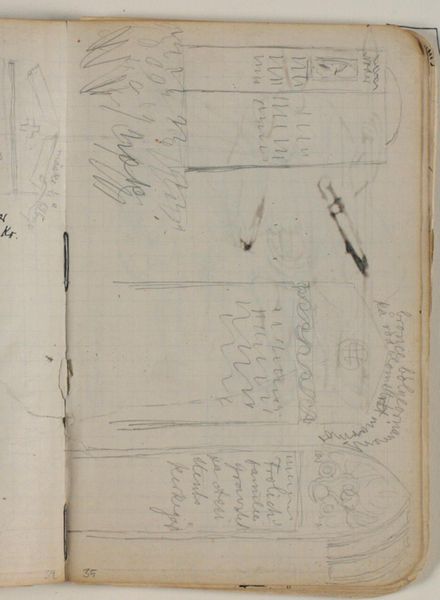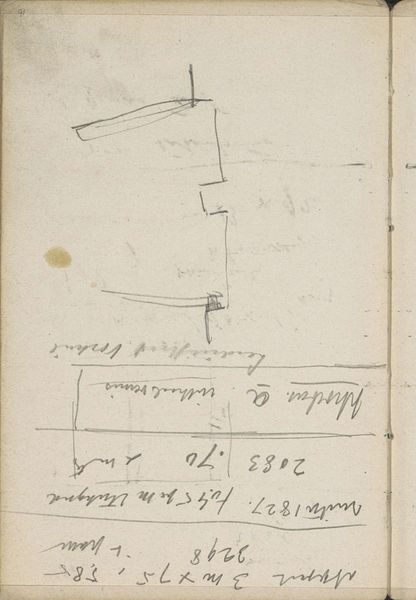
drawing, paper, pencil
#
drawing
#
aged paper
#
quirky sketch
#
sketch book
#
paper
#
personal sketchbook
#
idea generation sketch
#
sketchwork
#
geometric
#
pencil
#
sketchbook drawing
#
storyboard and sketchbook work
#
sketchbook art
#
initial sketch
Copyright: Rijks Museum: Open Domain
Curator: Here we have Cornelis Vreedenburgh's "Spijkers en een haak" – that translates to "Nails and a hook" – a drawing that probably dates from between 1890 and 1946, held here at the Rijksmuseum. Editor: Wow, that’s like stepping into the artist’s brain, isn’t it? Such a casual glimpse into the birth of an idea. The haphazard arrangement of objects gives off a delightfully intimate feel, almost like finding a forgotten page in an old diary. Curator: Precisely. Look closely and you’ll notice the texture of the paper itself. It appears quite aged. The aged paper acts as a visual document of time. A raw ingredient which many artists take for granted now since it can be simply manufactured to create that affect. Editor: Definitely! I'm also intrigued by those handwritten notes beside the sketches. Is that maybe like calculations of materials needed? It really throws light on the pragmatic considerations even in spontaneous artistry. Curator: Yes, those measurements alongside sketches of the nail and hook give insights into Vreedenburgh's method. The blend of planning and improvisation underscores the role of material considerations and function within the creative process, questioning traditional artistic boundaries by uniting utility with artistic creation. It is the intersection between thought, design and practical execution in an early stage. Editor: I think there is a beauty in these sorts of initial sketches. The imperfection makes it feel so human. Also, knowing this ended up in a museum elevates even mundane aspects like nails or hooks into worthy artistic subject matter. Curator: The genius is precisely that transformation of the mundane. What this small page from his sketchbook really illuminates for us, I feel, is the sheer effort in the initial phases, making art accessible by underscoring its underlying mechanisms. Editor: Well, after viewing it, I'm thinking a little differently about what goes into what might look easy when its finished.
Comments
No comments
Be the first to comment and join the conversation on the ultimate creative platform.
